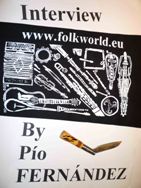
Navarre is a Spanish autonomous community in the south side of the Pyrenees mountain range, that keeps strong cultural links with its neighbour in the west: the Basque Country (Euzkadi). Mielotxin is a band that has worked in the latest years (2003-2011) on the development of a repertoire that fuses Basque musical traditions with those roots that relate Navarre with its other neighbour communities: Aragón and La Rioja. And also keeping an eye on its connection with the French lands in the north face of the Pyrenees. FolkWorld had the chance to get the interesting opinions from Mielotxin’s leader: Iñigo Aguerri.
The Beginnings
During the 1990s, Mielotxin’s leader Iñigo AGUERRI went to Spain’s northern community of Asturias to study musicology. Over there he became aware of the big evolution that traditional and folk music was taking place not just in Asturias, but also in other northern Spanish regions like: Galicia, Cantabria and the Basque Country. After an Asturian folk music experience with the band BRITONIA, he went back to his home land in Navarre where he decided to look for a way to modernize the local trad music, which was still quite strong but was lacking the kind of regeneration that was achieved for example in the Basque Country with bands such as OSKORRI or ALBOKA.
Iñigo started Mielotxin in 2003 in the town of Tafalla (35 kilometres to the north of Navarre’s capital city, Pamplona) looking for a sound that could represent Navarre’s traditions which are rooted in both cultures: the one that is shared with the (mostly) Spanish speaking neighbour communities in the south and east (La Rioja and Aragón), but also the one from the Basque Land (in the west), and from the Pyrenees (in the north) that provide also a special connection with the traditions extended all along those mountains and valleys, even with the closer French territories.
The band’s name is taken from one of the characters in the ancient carnival that takes place in the village of Lantz, Ultzamaldea (Navarre): the bandit Miel Otxín.
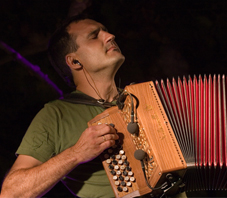
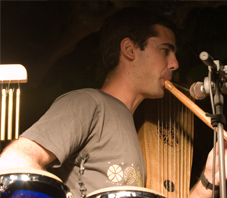
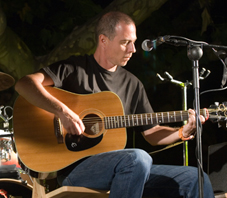
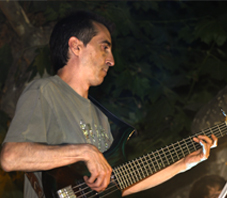
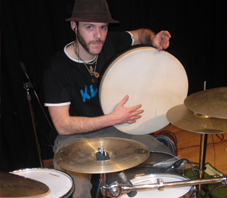
Meeting of Cultures
The Basque language, or Euskera, is the oldest one spoken on the Iberian peninsula, and probably the only remains of the ancient tongues of the many primitive tribes that populated it before the successive arrival of other peoples: Celts, Phoenicians, Greeks, Romans, Suevi, Wandals, Visigoths, Arabs,... Along the centuries, that series of different populations and cultures settling and interrelating developed today’s diversity of peninsular local cultures and languages (with, mostly but not only, Latin roots) such as: Spanish, Portuguese, Galician, Asturian, Catalan, etc.
Mielotxin was created in the town of Tafalla. This place becomes a kind of meeting point between the language and culture of the Basques, and also those peoples more influenced by the Roman civilization that are also settling on more southern parts of Navarre and speak mostly Spanish (also called Castilian).
Therefore, the band’s music is based on the mixed traditions of Navarre, for example:
All the above elements are evident in Mielotxin’s CDs, for example in their last one ‘Cuando la Beharra Obliga’.
Mielotxin has chosen songs both in Spanish and in Euskera Batúa (standard official Basque language), and today they feel a positive recuperation of this minority language in Navarre, and also in a feasible coexistence with Spanish.
Mielotxin’s Music
This young band has taken as their role models folk artists such as: Kepa JUNKERA, Carlos Núñez, Oskorri, Alboka, Joseba Tapia, Enrike Zelaia, Berrogüetto, La Musgaña, Solas, Flook, La Boutine Souriante, …
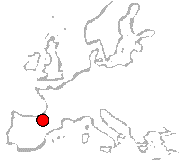
But as mentioned above, they have developed a sound that reflects the mixed character of the musical tradition in Navarre. It is clear that they have put significant emphasis on incorporating Basque musical elements mostly related to the areas of Navarre that are closer to Euzkadi and the Pyrenees:
But this has not excluded those other elements that are common with Aragón and the more central Spanish areas (La Rioja, Castilla y León,...):
The trajectory of Iñigo and Mielotxin has been an 8 year effort to achieve a more professional sound. Their success started in 2004 when they recorded their first CD and won the first prize in Navarre’s contest for New Music. They won more prizes and after the second CD ‘Almadierra’ in 2007, the band reached a big turning point that gave more relevance to the txistu, the vocals and the guitars.
Besides the several local singers and folkloric groups that work in the musical traditions of Navarre in its more conservative way, and some bands that work on ‘Celtic’ music, there are not too many more folk bands in this community that have taken such big steps forward as Mielotxin.

Since 2010 they have been presenting their third CD, ‘Cuando la Beharra Obliga...’ (‘When the Hardship Forces you ...’). This is an old saying in Navarre that inserts the Basque word ‘beharra’ (hardship, necessity) in a fundamentally Spanish sentence.
Mielotxin have played already in most areas in Navarre, and many other parts of Spain: Basque Country, Cantabria, Asturias, Galicia, Castile, Madrid, Andalusia, Barcelona, ...
In 2011 they will continue presenting their latest CD and they are already scheduled to play in several cities in Navarre (Tafalla, Pamplona,...) and in Central Frances (Limoges). The recession of Spain’s economy has drastically impacted the number of gigs: from around 30 two or three years ago, down to just 10 in 2010.
Regardless the hardship (the ‘beharra’), Mielotxin will continue working on their music, keeping those strong Basque roots, but also reinforcing the ones that come from the east and southern parts of that great land of Navarre.
Photo Credits: (1)-(6) Mielotxin, (8) 'Cuando la Beharra Obliga' (from website); (7) Navarre (by FolkWorld).